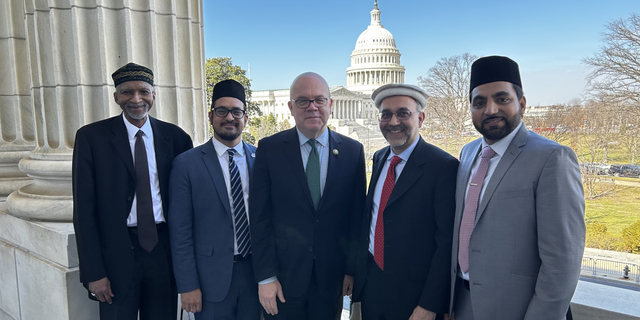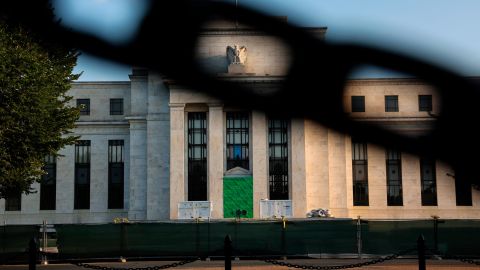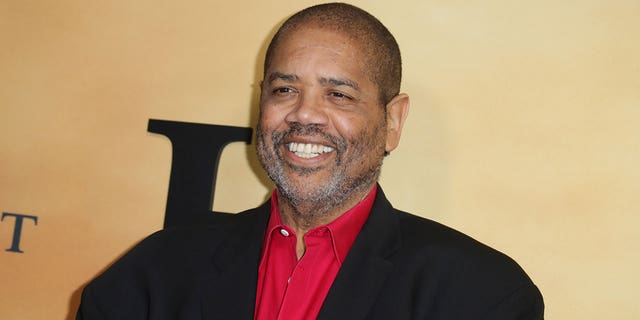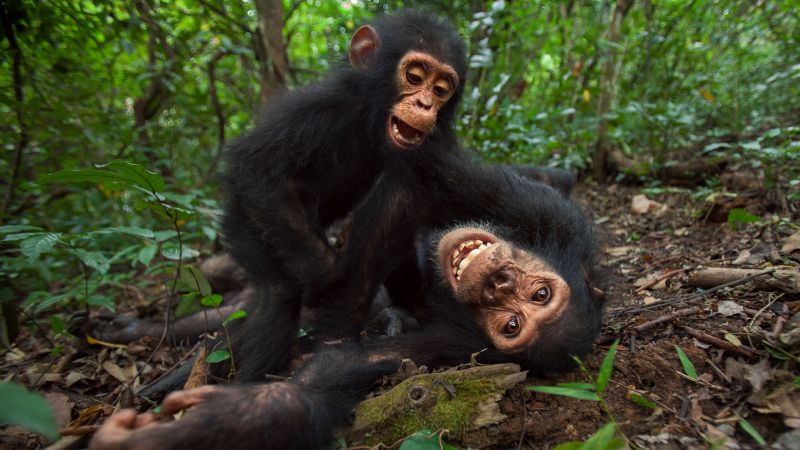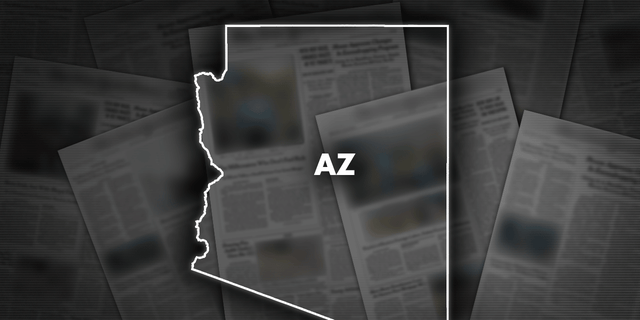From lotus silk to stone crabs. From eels in Japan to leather in Tuscany. We searched the earth to discover the stories behind …
Month: January 2023
Religious freedom summit brings together politicians from both sides of aisle for global event
The International Religious Freedom (IRF) Summit officially starts Tuesday in Washington, D.C. The event will have a range of discussions to increase public awareness and political strength for the international religious freedom movement.
The summit kicked off its pre-event activities with Congressional Advocacy Day to bring together lawmakers, ambassadors and survivors of persecution on Monday.
Advocates held more than 200 hundred meetings on Capitol Hill with both Republican and Democrat lawmakers, representing a various range of faith communities.

Rep. Jim McGovern, D-Massachusetts, center, meets with IRF advocates. (IRF Summit)
“We were tapping into the very best of what America has to offer … undeniable religious freedom for everyone, everywhere. We’ve seen that the U.S. has led in many respects on this in the human rights arms of both the Senate and the House in a bipartisan way,” Congressional Advocacy Day Co-chair Amjad Khan told Fox Digital.
FORMER NBA STAR CALLS OUT PERSECUTION AT RELIGIOUS FREEDOM SUMMIT
Rep. Michael McCaul, R-Texas, says he was proud that last year Congress reauthorized the United States Commission on International Religious Freedom to continue to shine a light on persecution around the world.
The commission was created in 1998 under the International Religious Freedom Act to independently assess and confront threats to religious freedom.

Sen. Amy Klobuchar, D-Minn., meets with IRF advocates. (IRF Summit)
The Foreign Affairs Committee chairman is an honorary House congressional co-chair for the summit and told Fox News Digital, “Pope Francis said it best when he said, ‘Religious freedom is a fundamental human right.’ Unfortunately, religious freedoms are increasingly under assault around the world.”
According to a Pew Research Center report, Christianity followed by Islam and Judaism are the three most restricted (persecuted) faiths.
CHRISTIAN PERSECUTION RISING AROUND THE WORLD AMID JIHADISM, TOTALITARIANISM: REPORT
Khan says Congress can do more for religious freedoms by shining a spotlight on prisoners of conscience.

Co-chair of Congressional Advocacy Day Amjad Khan speaks at the Capitol Visitor Center leading up to the International Religious Freedom Summit. (IRF Summit)
“I don’t think that the House has adopted any prisoners of conscience [legislation] yet in the new session. That’s not right. We have so many prisoners of conscience who are suffering right now in jail just for believing in their faith. People need to know their stories, share their stories, because that’s how we can be an advocate for them,” he added.
DOZENS OF CHRISTIAN GRAVES TOPPLED, DEFACED IN HISTORIC JERUSALEM CEMETERY: ‘CLEAR HATE CRIME’
More than 1,000 religious freedom advocates are expected to meet Tuesday in Washington, D.C., for the start of the International Religious Freedom Summit.
New year, new voters in Fed policymaking
Minneapolis
CNN
—
Every year the Federal Reserve’s policymaking committee — aka the officials who decide interest rate moves — gets a slight refresh, with four of the district presidents rotating out as official voting members and four rotating in.
The 2023 rotation brings a more dovish-leaning flock, and it comes during a critical year for the US central bank and the American economy.
This year the Federal Open Market Committee’s new voting members include the newest district president Austan Goolsbee, head of the Chicago Fed; Patrick Harker, of the Philadelphia Fed; Lorie Logan, the Dallas Fed president who started in August 2022; and Neel Kashkari, president of the Minneapolis Fed.
Rotating out as voting members are James Bullard of the St. Louis Fed; Susan Collins of the Boston Fed; Esther George, the Kansas City Fed chief who’s also retiring this month; and Loretta Mester of the Cleveland Fed.
On the whole the FOMC contingent remains largely similar, with eight of the 12 voting members continuing from 2022. The non-voting members still lend their voices and perspectives to the proceedings.

Following a stretch of seven consecutive heavy-handed interest rate hikes last year to battle rising prices, the Fed this year is expected to take a more delicate approach to its blunt monetary policy tools by downshifting on rate increases to an eventual idle.
For new Fed members, be they governors or district presidents, it can take a while to stake out their territory and potentially differ from consensus, said Ellen Meade, a Duke University economics professor who had a 25-year career at the Fed.
History has shown that the Reserve bank presidents typically tend to dissent more than board members; however, even that is a small percentage — about 7% — of votes cast, she added.
“I’m not expecting that we will see a lot of dissent in terms of votes,” she said. “I think where we might see it is how they color the data that they’re seeing.”
“Hawks” and “doves” are commonly used terms to describe Fed members’ differing monetary policy approaches. Doves tend to favor looser monetary policy and issues like low unemployment over low inflation. Hawks, however, favor robust rate hikes and keeping inflation low above all else.
“If I had to qualify them as the hawkish- or dovish-leaning, I would say that last year’s constellation was a reasonably hawkish one, and this year’s constellation is almost certainly not quite as hawkish,” Meade said.
That could change, however, if Federal Reserve Vice Chair Lael Brainard leaves to head President Joe Biden’s economic council. Brainard has been considered as leaning more dovish than Powell and others, so her departure could result in a more hawkish shift in ideology at the top of the Fed.

This particular Fed is obviously not quite as well known, Meade noted, adding that “because we have some new policymakers voting in 2023, we don’t have as much information on their policy inclinations as we did for last year’s voters.”
For any potential split to occur would take some large moves in labor market outcomes – something not seen to this point, Meade said.
“If [moderating inflation] holds up and the labor market softens but doesn’t take a very negative turn, then I think consensus is with us,” she said. “I think the question is what happens if the labor market starts to turn quickly?”
The Fed has indicated, through its economic projections, that it would tolerate unemployment rising to the 4.5% to 4.75% range. But if that grows closer or past 5% and inflation hasn’t moderated as much as desired, “then I think we’re in a place where we’re going to see more signs of disagreement.”
As it stands now, Fed officials have largely been singing from the same songbook, said Claudia Sahm, a former Fed economist and founder of Sahm Consulting.
“Whether it was voting members or non-voting members, you didn’t see a lot of pushback in public,” she said. “There was really a unified force of ‘we’re going to go big, and we’re going to go fast.’”
That unified messaging continued during recent speeches on how the Fed would slow it down, be patient and stay the course, Sahm added.
“The Fed is being very clear across the board, even people you would think of as more ‘dovish,’ that they do not want to let up too soon and get us into a situation where then they have to come back and do even more,” she said. “I don’t think that switching up who’s voting will matter much.”
“They’re all hawks now,” Sahm added.
The Fed also does not want to be in a position where it is lulled into a false sense of security by positive inflation data, she added. Fed Governor Christopher Waller put it bluntly in a speech last week: “We do not want to be head-faked.”
“It’s going to take months and months of good news, and frankly, we’re in store for a bumpy ride this year,” Sahm said. “It’s not like every month is going to be good news on inflation.”




2023 Federal Open Market Committee
Permanent voting members (Board of Governors):
Jerome Powell, chair
Lael Brainard, vice chair
Michael Barr, vice chair for supervision
Michelle Bowman, governor
Lisa Cook, governor
Philip Jefferson, governor
Christopher Waller, governor
Voting Districts:
John Williams, New York (permanent voting district)
*Austan Goolsbee, Chicago
*Patrick Harker, Philadelphia
*Lorie Logan, Dallas
*Neel Kashkari, Minneapolis
Non-voting districts:
Helen Mucciolo, interim first vice president, New York
Loretta Mester, Cleveland
Thomas Barkin, Richmond
Raphael Bostic, Atlanta
Mary Daly, San Francisco
James Bullard, St. Louis
Esther George, Kansas City (plans to retire this month)
Why Tyrian Purple Dye Is So Expensive | So Expensive | Insider Business
Making authentic Tyrian purple dye starts with extracting a murex snail gland. After a series of painstaking steps, Tunisian dye …
You can’t really tell who ‘looks trustworthy’

We can’t determine who’s trustworthy by looking at their appearance, research finds.
“In 2001, George W. Bush proclaimed that he looked into Vladimir Putin’s eyes and found the Russian leader to be ‘trustworthy,’” the authors write in a paper on the work in the journal Political Behavior.
“Many people claim to be able to read their counterparts in bargaining settings; there is little doubt that this would be a valuable skill.… How often do they get it right?”
Not very often.
Using decisions made in experimental trust games conducted in previous academic studies, Rice University political scientist Rick Wilson and Texas A&M University economist Catherine Eckel asked subjects in the new study to view photos of the people who made those decisions and guess their levels of trustworthiness. Even though subjects were motivated by being paid for correct guesses, they had little accuracy.
Wilson says incorrect guesses were tied to distinctive characteristics.
“We found that subjects were influenced by stereotypes based on the features seen in the photos, including gender, skin color, or attractiveness,” he says. “Our results revealed that people are fooling themselves when they think they can predict trustworthiness from appearance alone.”
So do Wilson and Eckel believe it when world leaders claim they can judge trustworthiness just by meeting face to face?
“We’re skeptical,” they conclude in the paper. “While people are confident in their ability to quickly read the faces of others, they rarely do better than chance.”
Source: Rice University
The post You can’t really tell who ‘looks trustworthy’ appeared first on Futurity.
‘Remember the Titans’ writer Gregory Allen Howard dies at age 70
Screenwriter Gregory Allen Howard, who skillfully adapted stories of historical Black figures in “Remember the Titans” starring Denzel Washington, “Ali” with Will Smith and “Harriet” with Cynthia Erivo, has died. He was 70.
Howard died Friday at a hospital in Miami of heart failure, according to publicist Jeff Sanderson.
Howard was the first Black screenwriter to write a drama that made $100 million at the box office when “Titans” crossed that milestone in 2000. It was about a real-life Black coach coming into a newly integrated Virginia school and helping lead their football team to victory. It had the iconic line: “I don’t care if you like each other or not. But you will respect each other.”
‘1923’ STAR HARRISON FORD ON THE SECRET TO HIS DECADES-LONG CAREER: ‘I’VE BEEN VERY LUCKY’
Howard said he shopped the story around Hollywood with no success. So he took a chance and wrote the screenplay himself. ″They didn’t expect it to make much money, but it became a monster, making $100 million,” he said. “It made my career,” he told the Times-Herald of Vallejo, California, in 2009. The film made the Associated Press’ list of the best 25 sports movies ever made.
Howard followed up “Remember the Titans” with “Ali,” the 2002 Michael Mann-directed biopic of Muhammad Ali. Smith famously bulked up to play Ali and was nominated for a best actor Oscar.

Pictured: Gregory Allen Howard attends The Orpheum Theatre on Oct. 29, 2019, in Los Angeles, California. Gregory Allen Howard who wrote “Remember the Titans” died at age 70 in Miami due to heart failure.
(Leon Bennett/WireImage)
Howard also produced and co-wrote 2019′s “Harriet,” about abolitionist Harriet Tubman. Erivo lead a cast, that included Leslie Odom Jr., Clarke Peters and Joe Alwyn.
“I got into this business to write about the complexity of the Black man. I wanted to write about Martin Luther King, Malcolm X, Muhammad Ali, Marcus Garvey. I think it takes a Black man to write about Black men,” he told the Times-Herald.
Born in Virginia, his family moved often due to his stepfather’s career in the Navy. After attending Princeton University, graduating with a degree in American history, Howard briefly worked at Merrill Lynch on Wall Street before moving to Los Angeles in his mid-20s to pursue a writing career.
He wrote for TV and penned the play “Tinseltown Trilogy,” which focused on three men in Los Angeles over Christmastime as their stories interconnect and inform each other.
CLICK HERE TO GET THE FOX NEWS APP
Howard also wrote “The Harlem Renaissance,” a limited series for HBO, “Misty,” the story of prima ballerina Misty Copeland and “This Little Light,” the Fannie Lou Hamer story. Most recently, he wrote the civil rights project “Power to the People” for producer Ben Affleck and Paramount Pictures.
He is survived by a sister, Lynette Henley; a brother, Michael Henley; two nieces and a nephew.
Does having a teen feel like living with a chimpanzee? You may not be far off, study shows
Sign up for CNN’s Wonder Theory science newsletter. Explore the universe with news on fascinating discoveries, scientific advancements and more.
CNN
—
Chimpanzee teens may not be so different from the ones living in our homes, a new study says.
Except that your teen might be more impulsive.
Researchers worked with 40 chimpanzees born in the wild while they were at a sanctuary in the Republic of Congo, playing games that tested the adolescent animals’ orientation toward risk-taking and impulsivity, according to the study published January 23 in the Journal of Experimental Psychology: General by the American Psychological Association.
“Human adolescents are grappling with changing bodies and brains, and tend to be more impulsive, risk-seeking, and less able to regulate emotions than adults,” said lead study author Dr. Alexandra Rosati, associate professor of psychology and anthropology at the University of Michigan, via email. “Chimpanzees face many of the same kinds of challenges as humans as they grow up.”
The study described chimpanzees’ adolescence as a period from about ages 8 to 15 in a 50-year life span. Like young humans, they experience rapid hormone changes, new social bonds, increased aggression and a competition for social status.
Teen chimpanzees are overlooked in studies compared with infants and adults, said Dr. Aaron Sandel, an assistant professor of anthropology at the University of Texas at Austin, who was not involved in the current study.
“For a while there was a pretty big gap in the literature on (chimpanzee) adolescents,” Sandel said, noting that researchers often don’t focus on this period. Scientists may avoid studying teen chimps because their own human experiences with teenage years are complicated, he said.
The new study found that adolescent chimpanzees were more likely to take risks in their games than their adult counterparts, but they just as likely would wait for a greater delayed reward.
But human teens are known to be more likely to take a smaller, more immediate reward, the study noted.
The chimpanzees underwent two tests with food rewards. These animals tended to dislike cucumbers while liking peanuts somewhat and loving bananas.
The first test involved a bit of a gamble. Both adult and teen chimpanzees were asked to choose between two containers: one that always had peanuts and another that had either the dreaded cucumber or treasured banana, the study said.
The adolescent chimps were more likely to take a risk and go for the cucumber or banana container than the adults, the study said. Both groups showed similar negative reactions – such as moaning, whimpering, screaming and banging on the table – when they ended up with a cucumber.
The second test resembled a well-known one that has been given to human children. Chimpanzees had the option of having one banana slice immediately or waiting for a minute and then getting three slices.
Both adults and adolescents waited for the three slices at a similar rate, but the teens were more likely to throw a fit while they waited a minute, the study said.
In a similar test, human teens were more likely to take the smaller treat right away, according to the study.
“Prior work indicates that chimpanzees are quite patient compared to other animals, and this study shows that their ability to delay gratification is already mature at a fairly young age, unlike in humans,” Rosati said.
Sandel noted that it is important to be careful about comparing the experience of humans with other animals. While primates are our closest relatives, we are different species, he pointed out.
So how might a parent handle a teen who engages in risky behavior and hates to wait for a reward?
The first step is to understand what is going on in their developing brains, said Dr. Hina Talib, an adolescent medicine specialist and associate professor of pediatrics at the Albert Einstein College of Medicine in New York City.
“I think teenagers get a bad rap,” she said. “We often think of them as risky little devils. It does come from some element of truth.”
The human teenage years are a time of explosive growth and development, she added.
Their brains are wired to seek out new experiences and information, which often means taking risks, Talib said.
At this time, they can try new things, build their ideas of who they are and try on different identities, said Tina Bryson, a Pasadena, California, therapist and author of “The Power of Showing Up: How Parental Presence Shapes Who Our Kids Become and How Their Brains Get Wired.”
They learn from the information they gain, which can help them manage their behavior better – eventually, Talib said.
Families can encourage them to try new things, she said, while providing ground rules and support that will help keep them safe.
“We want you to go anywhere and do everything … Here is where we might step in or where we have house rules about something,’” Talib recommended that parents say. Your conversations should be “coming from a perspective of we are here as the floor, as the safety net as you go and have these amazing trapeze experiences.”
And while their brains are growing a lot, not every area is able to be fully and optimally utilized at the same time.
Late middle and early high schoolers might be relying on the parts of the brain that rule emotion and reactivity, she added, while their decision-making and reasoning parts are busy growing.
That doesn’t mean that teens are not capable of good decision-making and long-term planning, she added – you just have to help set them up for success.
“When things are calm, they are able to problem solve just as well as adults,” Talib said. Help them stay calm when they are in trouble and need to solve a problem and save the difficult conversations for when they are no longer stressed out, she added.
Instead of worrying about how to get rid of their impulsivity, Bryson recommended finding ways to help strengthen empathetic, thoughtful, and reasoned decision-making.
Encourage them to pause before acting and walk through the thinking process with them, she said. You can also talk through how you think through your own decisions, Bryson said.
And while their brains may be undergoing changes, be sure to call out the things they are doing well, Talib said.
“The more you do that, the more you help them see themselves in a positive light, the more that gets hardwired in them,” she said, “and they are better able to face the world around them.”
Top 10 Projects Completing in 2023
It’s going to be a huge year. Subscribe to keep track of it all – https://bit.ly/the-b1m Full story here …
Mystery solved: Why switchgrass takes the summer off
Researchers have solved a puzzle that could help switchgrass realize its full potential as a low-cost, sustainable biofuel crop and curb our dependence on fossil fuels.
Among switchgrass’s attractive features are that it’s perennial, low maintenance, and native to many states in the eastern US. But it also has a peculiar behavior working against it that has stymied researchers—at least until now.
Berkley Walker’s team in the plant biology department at Michigan State University has revealed why switchgrass stops performing photosynthesis in the middle of the summer—its growing season—limiting how much biofuel it yields.
Published in Frontiers in Plant Science, the knowledge is a key piece to overcoming this quirk and getting the most out of switchgrass.
“We want bigger plants, period, so being able to crack this and lift this limitation, that is the goal,” says Mauricio Tejera-Nieves, a postdoctoral researcher and the study’s lead author.
Tejera-Nieves, Walker, and colleagues discovered the explanation for this limitation in switchgrass’s rhizomes. These are little knobby structures that live underground among the plant’s roots.
If you’ve ever sliced or shredded ginger, you’ve held a rhizome. Rhizomes store food in the form of starch to help plants survive winter, and that starch is made from the sugars photosynthesis produces. Once switchgrass rhizomes are full of starch, they signal the plant to stop making sugars and adding biomass through photosynthesis.
Switchgrass ‘banking’
Tejera-Nieves compared the rhizomes to a bank, albeit a slightly unusual one.
“Imagine getting a call from your bank and they tell you, ‘Hey, your account is full. You can take a vacation, go on sabbatical, do whatever you want. Just stop working because we’re not storing any more money,’” Tejera-Nieves says.
“It’s a very conservative strategy, but it’s one that works for switchgrass. The longer it’s doing photosynthesis in nature, the more likely it is that an animal will eat it or something else bad will happen.”
Although this evolutionary strategy has worked to the plant’s advantage in nature, it is a disadvantage for humans who want to ferment switchgrass’s biomass into biofuel. By understanding the root cause of this behavior, though, researchers can start looking for ways around it.
“Now we can start looking for breeding solutions,” says Walker, an assistant professor in the College of Natural Science who also works in the department of energy’s Plant Research Laboratory. “We can start looking for plants that have an insatiable appetite for photosynthesis.”
Why take summers off?
Switchgrass has yet to join plants including corn and sugarcane as a commercialized source of biofuel.
But that makes sense because those established crops have a huge head start, the researchers say.
Farmers have selected and reproduced versions of those crops that have qualities that are attractive to us, such as higher sugar content, for thousands of years.
Humanity’s interest in switchgrass as a biofuel source is much more recent in comparison. So, it’s only natural that switchgrass exhibits some suboptimal behaviors that researchers would like to iron out, like stopping photosynthesis without explanation.
“The plants get to about midseason and say, ‘Okay, we’re done,’” says Walker.
“As a researcher, you’re literally asking, ‘Why are you doing that? It’s warm, the sun is out, and your leaves are green. What is happening?’” says Tejera-Nieves.
Tejera-Nieves joined Walker’s team with a hypothesis to answer that as well as the means to test it with support from the Great Lakes Bioenergy Research Center, or GLBRC. He suspected that a lack of water might be playing a role.
In addition to awarding Tejera-Nieves a fellowship, the GLBRC built what are called rainfall exclusion shelters in the fields at Michigan State’s W.K. Kellogg Biological Station. These do exactly what their name promises: They exclude rain. Plants underneath the shelters stay dry while their neighbors outside can freely soak up sprinkles, showers, and storms.
The shelters presented the perfect place to test Tejera-Nieves’ idea, even if it didn’t go exactly as he initially predicted.
“If water limitation was the reason for the behavior, the plants under the shelters would do poorly,” Tejera-Nieves says. “But they didn’t. After six months of water limitation, the plants under the shelter were just as happy as the plants outside.”
So, he needed to dig a little deeper—literally—to look at what was happening in the rhizomes. He found that the starch levels of all the plants grew over time until they hit a peak level and then would remain flat. Once that happened, photosynthesis in the plants’ leaves switched off.
“Once the rhizomes are full, the plant just stops,” Tejera-Nieves says.
“You can see it so clearly in the data,” Walker says. “The plants do photosynthesis in the summer to save carbon for the winter and, as soon as they’ve got enough, they shut down.”
One of the next steps for the team is developing a better understanding of the molecular machinery that coordinates this photosynthesis shutdown. That knowledge could reveal even more clues about how to override the plant’s behavior and may prove handy for biofuel crops beyond switchgrass.
“You see similar trends with photosynthesis across perennials,” Walker says. “We’d have to look to be sure, but we think it could be the same mechanism.”
The US Department of Energy, Office of Science, Office of Biological and Environmental Research, the Great Lakes Bioenergy Research Center, the National Science Foundation Long-term Ecological Research Program at Kellogg Biological Station, and Michigan State University AgBioResearch funded the work.
Source: Matt Davenport for Michigan State University
Bystander wounded in Arizona RV park police shootout
A bystander was struck by gunfire during a shootout between a suspect and officers at a recreational vehicle park in northwestern Arizona, authorities said.
Bullhead City police said officers went to the Silver View RV Resort on Friday to investigate reports of a man in a bulletproof vest pointing a gun at people.
From inside a trailer, the suspect shot at officers, who returned fire, police said in a statement. One of the rounds from the suspect ripped through another trailer “and struck an innocent bystander.”
The victim was taken about 95 miles north to a Las Vegas hospital and was expected to survive. No officers were hurt.
ARIZONA’S CRIME CONCERNS COULD JEOPARDIZE LITTLE ROCK MAYOR’S REELECTION

A man who was waving a gun at people in a bulletproof vest at an Arizona RV park was taken into custody after eight hours of locking himself in a trailer. An innocent bystander was struck during the shootout and was treated at the hospital.
CLICK HERE TO GET THE FOX NEWS APP
Police identified the suspect Saturday as Bullhead City resident Kyle Schafer, 41, but did not say what charges he may face.
Schafer locked himself inside his trailer for nearly eight hours before surrendering and being taken into custody, police said. He was also brought to a Las Vegas hospital, with unspecified injuries.
Bullhead City is located on the Arizona side of the Colorado River, near the juncture with Nevada and California. It is home to about 41,000 people.
An outside agency, Lake Havasu City Police, will investigate the shooting for Bullhead City police in line with the department’s protocol for cases where officers fire their weapons.


